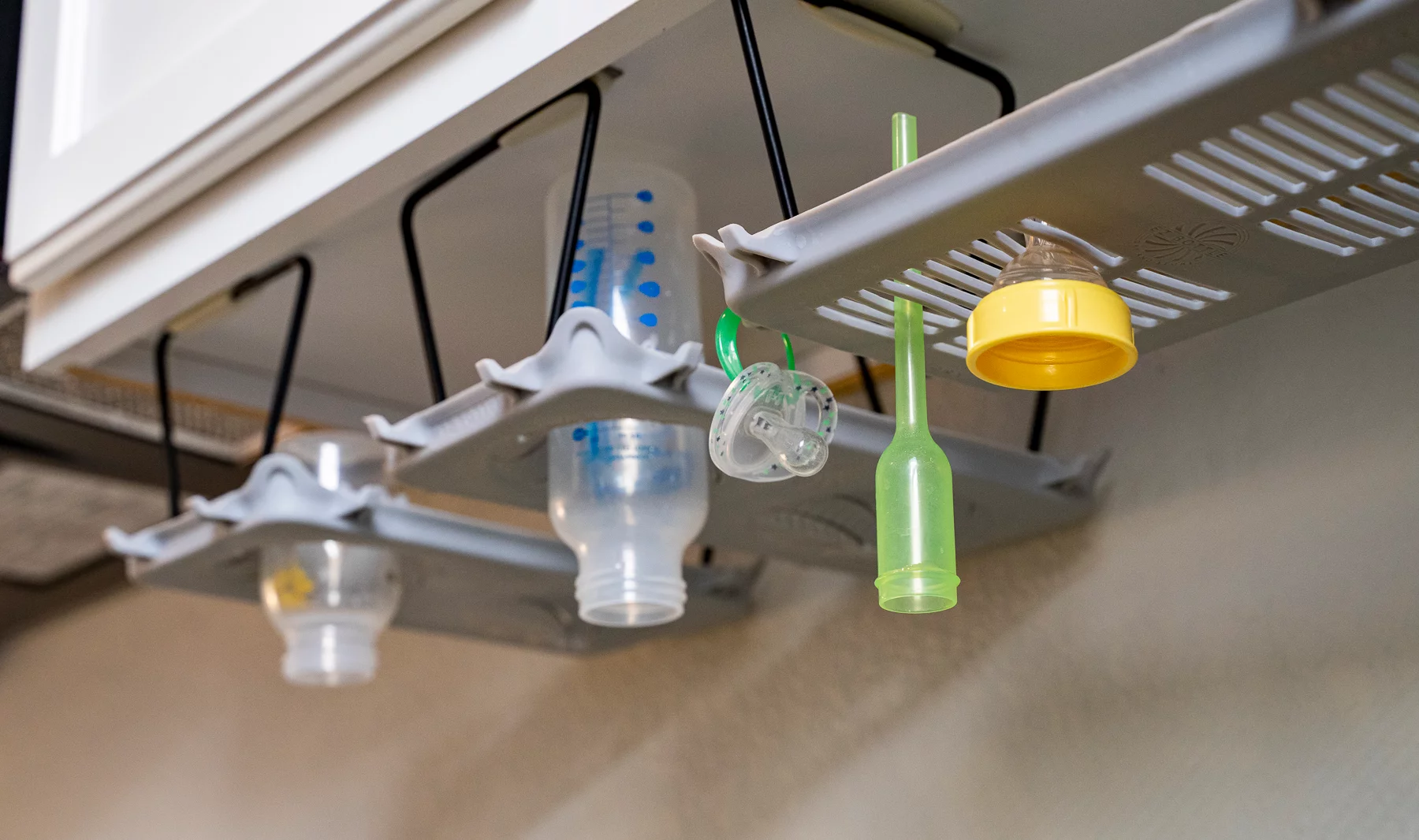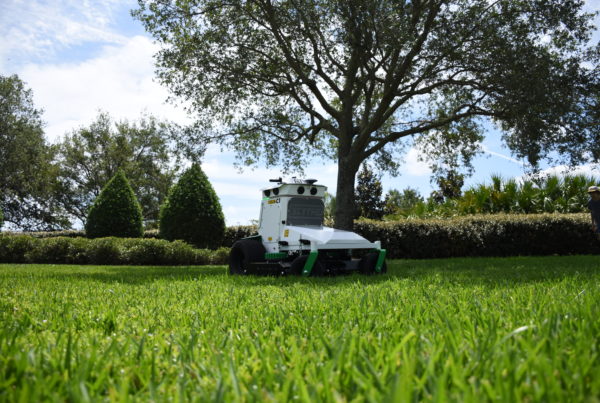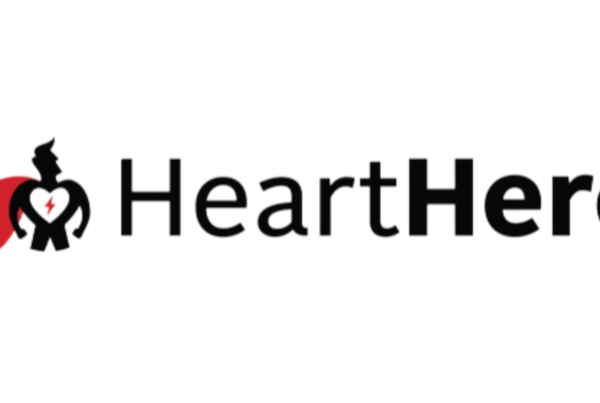When Matt Jend, a mechanical engineer by trade, had two children under two, he found his kitchen counter space filled with drying bottles.
“It was wild times,” Jend remembers. “We had tons of sippy cups, baby bottles, and the accessories, the nipples, the straws, the caps…” At the time, all drying racks on the market were made to sit on top of the counter, and Jend didn’t have a very large kitchen or house. “We didn’t have space for the fake grass racks or any kind of countertop rack,” he says. So, overwhelmed by bottles and their parts, he developed the E Z Bottle Dry and Store solution.
What is E Z Bottle Dry and Store?
E Z Bottle Dry and Store is a drying rack that hangs from the bottom of upper kitchen cabinets. It’s kind of like a Chinese finger trap: the cup or item to be dried slides into a spiral insert where it is inverted and held to dry above the countertop space. This opens the countertop back up to parents and food prep.
How does it work?
Each rack has a 100% silicone membrane with different slot options that snap in like a Tupperware lid. The rack is clipped to the bottom of a cabinet with a double-sided sticky tape, like a Command strip, which holds a little foot pad on the wire frame to the underside of the cabinet. To clean it, you can either take the whole frame off or you can just pull the membrane off, which is dishwasher safe. It’s very user friendly.
How did you develop E Z Bottle Dry and Store?
About four years ago when my kids were both very small, I did all the CAD work on the product. After drafting it, I went to the 3D printing store close to my home. There, the staff helped me to make 3D prints of my design, eventually selecting a flexible material. About the time that we were testing that prototype, I met Yoriko and we started talking about what I needed to do to secure the patent.
What was the patent process like?
I wrote a skeleton for the patent. Because I had done the CAD work, I had all the images, drawings, etc. that she needed for the patent. She helped me with the verbiage and guided me along, and I supplied all the drafting elements, like the images and the numbering. Even though I was still in the design phase, it was very smooth sailing. She was so easy to work with and together, we cranked out the initial patent. It was about three years ago now when we were finally issued the patent.
How did having CAD experience help the patent process?
It helped a lot and saved my budget. CAD to me is kind of like drawing for an artist. Yoriko would come back and ask for a specific angle, for example, or request something in black and white. So, I just opened the CAD file and quickly developed the image that she needed. This sped up the process a lot because I could produce what she needed without her talking to a CAD designer, then getting me involved to tweak this, that, and the other. Instead, it was a simple “you want this shot? Here’s twenty angles. Choose the one you like, and we’ll go with that.”
What’s next for this project?
I’m setting up an Amazon storefront. We recently had 2000 product kits made, which just yesterday we shipped to Amazon. If I get traction, then I may approach Dr. Brown’s or some major manufacturer to see if I can sell them the patent plus the product, perhaps get some royalties. But for right now, we’re just trying to sell the 2000 that we’ve manufactured.
Is it the kind of thing you can use for other products, not just bottles?
Yes. It’s made for baby bottles, but it can be used for anything, like spoons or utensils. For example, right now my wife uses it for thermal insulated coffee cups, which are handwash only. They also work for protein shaker bottles. You can hang the cup, the little ball, and the spiral piece. There are two spiral inserts and one slotted insert. The slotted insert hold straws, lids, etc., and the spiral insert holds the whisk that goes in the shaker bottle. It could also be a great solution for RV kitchen storage.





